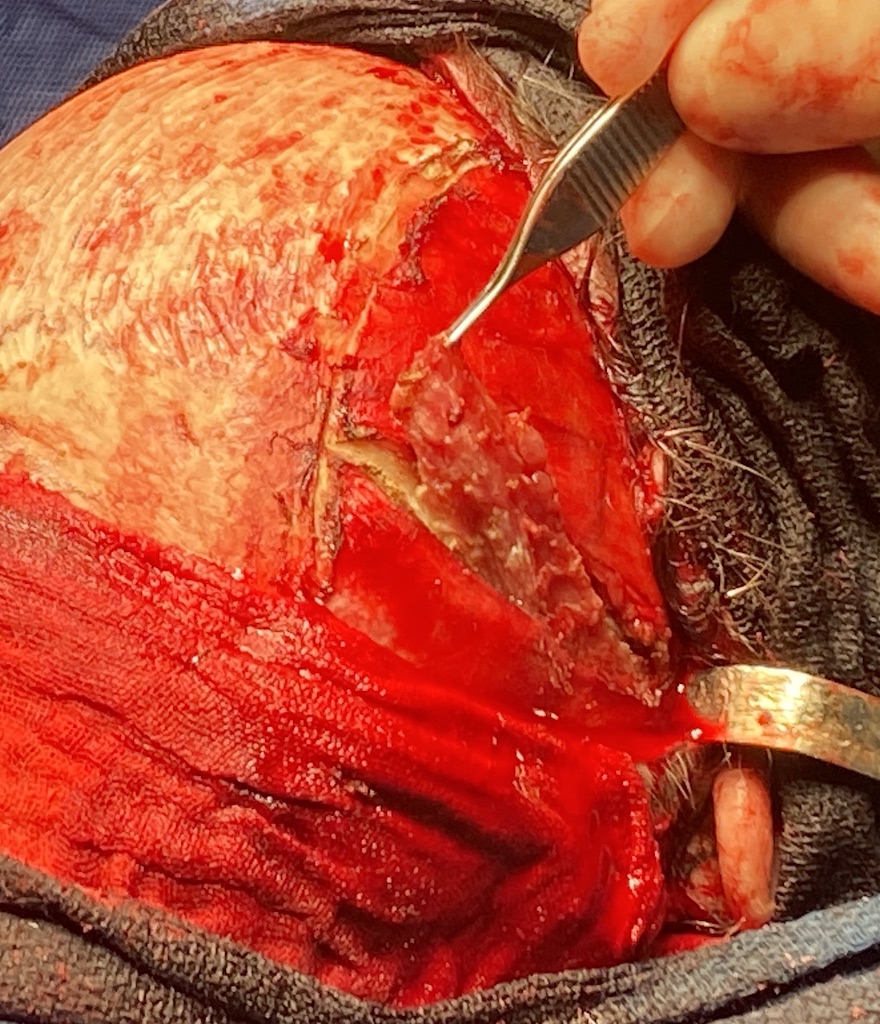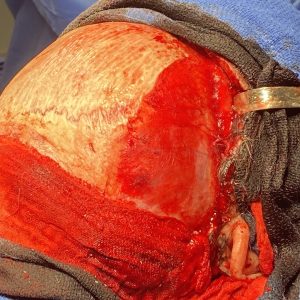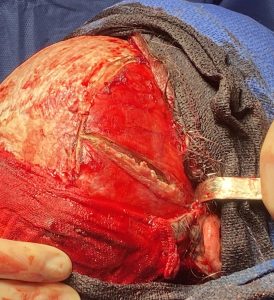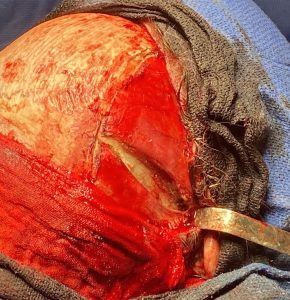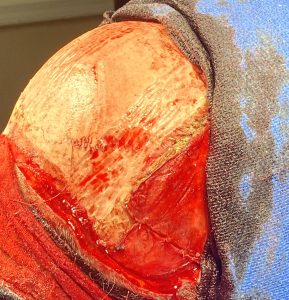Narrowing of the wide or overly convex side of the head is done by a soft tissue reduction of the temporal muscle. While many think it requires a bone reduction technique the reality is that muscle removal is far more effective and can be done by a hidden incision behind the ear. The temporal muscle is thicker than many think even the posterior portion over the convex part of the temporal bone.
Temporal muscle removal is a hard technical concept to understand as how it is performed aesthetically is completely hidden from view. But like all aesthetic procedures it is one learned from its use in more reconstructive craniofacial surgery which is performed openly through a bicoronal incision. Int rare instances I still perform an open coronal scalp incision for various aesthetic skull and forehead reshaping procedures where the temporal muscles are largely exposed. In a recent case skull bone reduction was requested along with head narrowing as well. This provide the opportunity to see openly how a temporal muscle reduction is performed.
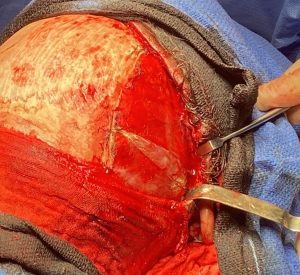
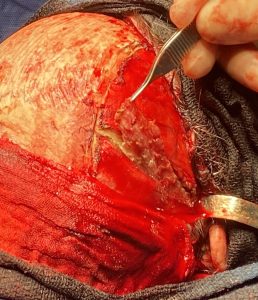
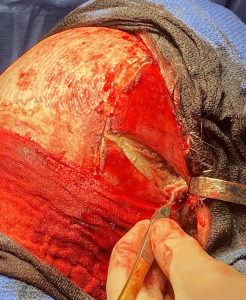
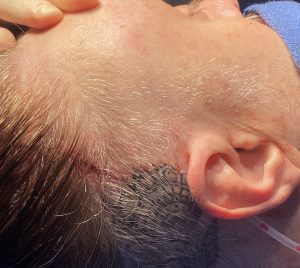
Dr. Barry Eppley
World-Renowned Plastic Surgeon

